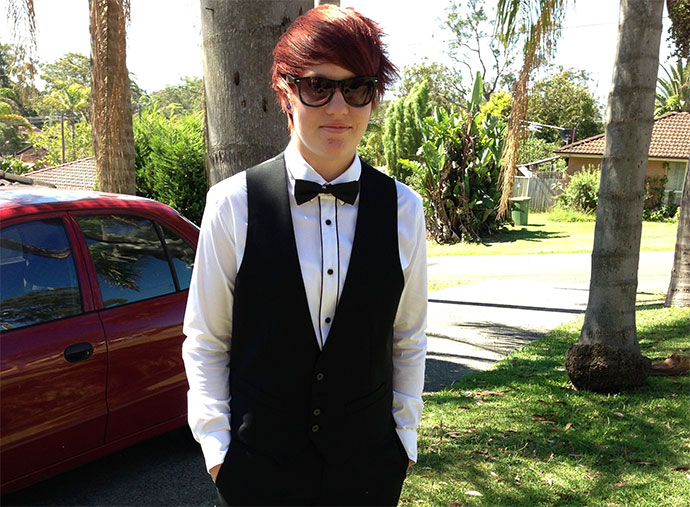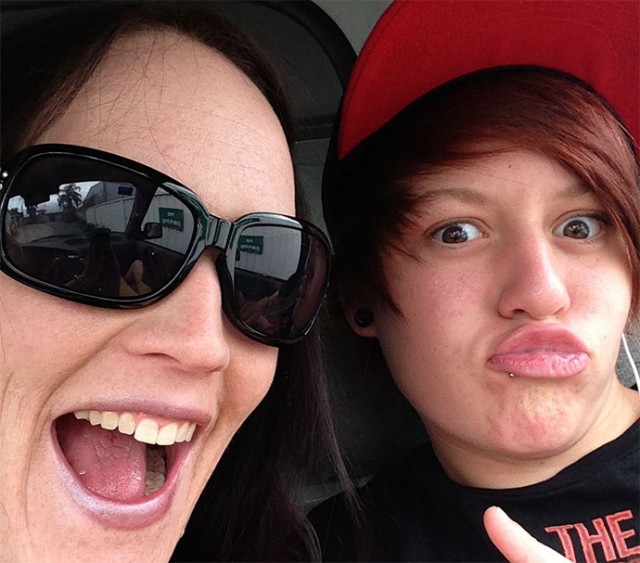Guest writer Celeste Cannell looks the death of her best friend’s 16-year-old daughter, and discusses why we need to take the shackles off discussing mental health issues…
With National R U OK? Day fast approaching, my thoughts have inevitably be drawn to the tragic loss of my best friend’s 16-year-old daughter just 22 short months ago.
She was a beautiful, intelligent and funny teenage girl who enjoyed the love of a supportive family and the acceptance of like-minded friends yet sadly, it still wasn’t enough.
Why? That of course remains the 64 thousand dollar question for friends and relatives alike.
The answer; we haven’t the foggiest.
Sitting in my GP’s office recently an alarming statistic caught my eye on the medical infomercial channel; one in four girls aged between 16 and 17 years have engaged in some form of self-harm.
Likewise, Health Minister Susan Ley recently revealed that Australia’s largest ever national survey of youth mental health has revealed a confronting picture of teenage depression, self-harm and suicide.
Is it our ever increasing addiction to technology? Or perhaps it is the artificial comfort of social media reducing our ability to make real and life-affirming social connections?
The irony of course is that while older generations lament the fact that kids don’t play outside anymore, that long gone are the neighbourhood cricket matches and the imaginative role play that would run until the street lights come on, today’s teens actually seem to communicate with one another more than any other generation past.
From IM to Snapchat and from Facebook to Twitter, today’s teens never stop talking. So why then do they seem to find it almost impossible to talk about what really matters?
After Emily took her own life, I found myself on a hunt for answers which ultimately led to a job working inside high schools with disengaged and disadvantaged teens. While my primary role is to assist them to re-engage with education and plan positive post school pathways, I more often than not also find myself charged with the task of helping them address the emotional challenges of their life and find the appropriate language to have difficult conversations.
A few months before her actual death, Emily made her first unsuccessful attempt to take her own life. Sadly, but not surprisingly, this first attempt became her family and her friends’ first real insight into the true depth of her very private pain. What followed was a formal diagnosis of clinical depression – a diagnosis that revealed that Emily’s brain fundamentally lacked the ability to effectively self-regulate her emotions in a healthy and stable way.
This was not a case of teenage angst, this was not puberty blues; this was a serious and chronic medical condition that most of us know far too little about.

In the months that followed Emily had many people, including myself, asking her how she was feeling on a daily basis. Yet despite us having clear evidence that she wasn’t “OK” and despite all of us doing our very best to show that our love and support was entirely without condition, Emily still felt the need to put on a brave face and for some painfully inexplicable reason, still felt the need to offer a lie as opposed to share the truth.
For me what little answers there are lie in our inability to truly recognise the severity and seriousness of mental health conditions such as anxiety and depression. They are not merely emotional disorders; they are not just a bad day or a bad mood; they are serious and life-threatening medical conditions that desperately need to be dragged out into the light of day for once and for all.
On November 9, 2013, Emily lost her battle with depression. Her capacity to positively manage her mental health illness was clearly not yet developed enough to enable her to save her own life and at the end of the day, she was sadly the only one that could.
They say that hindsight is a wonderful thing and I often find myself looking back over the sad chain of events and wondering what would of been different had Emily’s primary school been a Smiling Mind school?
What would have been different had she been consistently taught from kindergarten the power and benefits of mindfulness and meditation as part of her school curriculum?
I wonder what our nation would look like, what the future of mental health in our country would look like, if we ditched celebrating the queen’s birthday or having a public holiday in honour of a sporting grand final and instead choose to dedicate a public holiday to National R U OK? Day?
Over the last 22 months all of my unanswerable questions have been replaced with just one: Are we truly doing enough?
R U OK? Day is on September 10. Visit http://www.ruok.org.au for more information about the initiative.
If you or someone you know is experiencing difficulties and requires support please contact Lifeline on 13 11 14 or Kids Helpline on 1800 551 800.

Weekender Newsroom
This post has been published by the team in our newsroom.

